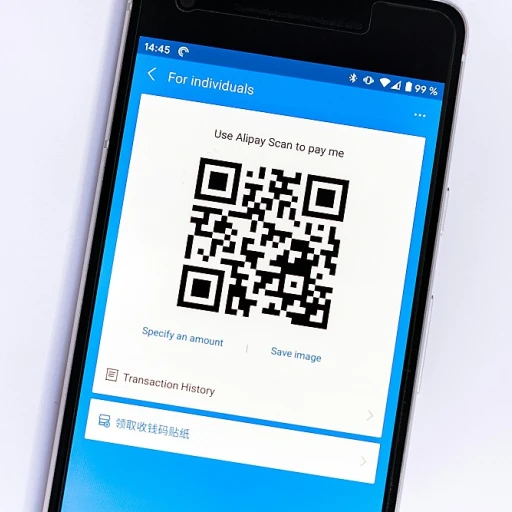
Understanding the csr-x program and its strategic value
What Sets the CSR-X Program Apart in Today’s Business Landscape
In a world where sustainable growth is not just a buzzword but a necessity, the CSR-X program stands out as a strategic lever for CEOs. This program is more than a traditional corporate social responsibility (CSR) initiative. It is designed to integrate science, economics psychology, and ecology economics into a cohesive process that delivers measurable value to both business and community.
Connecting CSR-X to Real-World Impact
The CSR-X program offers a unique blend of high-impact projects, such as youth STEM initiatives and collaborative summer experiences for high school students. These projects are not just about ticking boxes—they are about creating a culture of innovation and responsibility. For example, the California Youth STEM Project and the Culturator collaborative summer term provide school students with free access to STEM education, fostering a new generation of leaders who understand the intersection of business, science, and community needs.
- Episode series and watch parties that engage students and the wider community
- Design-led STEM projects that encourage hands-on learning and real-world problem solving
- Opportunities for teams to learn from high school students and summer experience participants
Strategic Value for CEOs
For CEOs, the strategic value of the CSR-X program lies in its ability to align with core business objectives while delivering tangible benefits. The program’s structure encourages a collaborative approach, bringing together diverse teams—culturator admin, project leads, and community partners—to drive innovation. By embedding the CSR-X process into your company’s DNA, you foster a culture that values both profitability and purpose.
To further understand how structured equity can enhance your corporate strategy and amplify the impact of programs like CSR-X, consider exploring unlocking the potential of structured equity in corporate strategy.
Building Trust Through Transparency and Collaboration
Transparency is key. The CSR-X program emphasizes clear communication—whether it’s through a published privacy policy, user agreement, or accessible contact points like cayouthstemproject gmail, org california, culturator org, and admin culturator. This openness builds trust with stakeholders and ensures that every project, from school-based STEM initiatives to community-wide summer experiences, is accountable and impactful.
Aligning the csr-x program with business objectives
Building Strategic Alignment for Lasting Impact
Aligning the csr-x program with core business objectives is a critical process for CEOs aiming to drive sustainable growth. The value of csr initiatives goes beyond compliance; it’s about integrating science, economics psychology, and community needs into the heart of your strategy. This approach helps companies not only meet stakeholder expectations but also unlock new opportunities for innovation and differentiation. A successful alignment starts with a clear view of your company’s mission and long-term goals. For example, if your organization is focused on youth stem education or supporting high school students through collaborative summer experiences, the csr-x program can be designed to amplify these priorities. By connecting csr efforts with projects like the california youth stem project or partnering with organizations such as culturator org, you create a direct link between your business and the communities you serve.Integrating CSR into Business Processes
To ensure the csr-x program delivers strategic value, it’s essential to embed it into your company’s existing processes. This means involving cross-functional teams—such as design, economics, ecology, and admin culturator—in the planning and execution phases. Consider how your csr initiatives can enhance your summer term offers, support school students, or provide free resources for high school stem projects. The experience gained from these projects not only benefits the community but also strengthens your team’s skills and company culture.- Map csr-x objectives to specific business outcomes, such as increased brand loyalty or improved employee engagement.
- Leverage data from previous episode series or summer experiences to refine your approach.
- Encourage a collaborative summer mindset, where each department contributes to the csr process.
Leveraging Strategic Finance Tools
For CEOs looking to maximize the impact of their csr-x program, understanding the financial implications is key. Exploring innovative funding models—such as structured equity—can provide the flexibility needed to scale csr projects without compromising financial stability. For a deeper dive into how structured equity can support your corporate strategy, see this guide on unlocking the potential of structured equity in corporate strategy. By aligning the csr-x program with your business objectives and leveraging both internal and external resources, you set the stage for measurable, high-impact results. This alignment not only benefits your company but also creates lasting value for students, schools, and the broader community. For questions or to learn more about collaborative opportunities, contact culturator admin or reach out via cayouthstemproject gmail.Engaging stakeholders through the csr-x program
Building Meaningful Connections with Stakeholders
Engaging stakeholders is at the heart of any successful csr-x program. For CEOs, this means moving beyond traditional communication and fostering a collaborative environment where every voice matters. The process starts by identifying key groups—employees, community members, school students, and partners—who can benefit from and contribute to the program’s goals.
- Community Involvement: The csr-x program offers unique opportunities for local engagement. For example, partnering with high schools and youth STEM initiatives, such as the California Youth STEM Project, can create a summer experience that blends science, economics psychology, and ecology economics. These collaborations not only support students but also enhance the company’s reputation as a responsible leader.
- Collaborative Projects: Launching a csr collaborative or STEM project during the summer term can be a powerful way to involve both employees and students. By designing episode series or workshops, companies can provide free learning experiences, encourage innovation, and strengthen ties with the community.
- Internal Engagement: Building a strong team culture is essential. The role of a culturator or admin culturator can help facilitate internal communication, ensuring that everyone understands the program’s objectives and feels empowered to contribute. Regular updates, feedback sessions, and recognition of contributions keep the team motivated and aligned.
Transparency is crucial throughout this process. Sharing updates on progress, challenges, and outcomes—while respecting privacy policy and user agreement guidelines—builds trust. Open channels like contact emails (e.g., cayouthstemproject gmail, org california, culturator org, admin culturator) invite ongoing dialogue and feedback.
For CEOs looking to enhance stakeholder engagement through technology, exploring cross-platform app development for stakeholder engagement can streamline communication and offer a more interactive experience. This approach ensures that every episode, project, and summer term initiative is accessible and impactful for all participants.
Ultimately, a well-designed csr-x program creates a high-value experience for everyone involved, from high school students to seasoned team members. By prioritizing collaboration and open communication, CEOs can drive sustainable growth and foster a culture of shared success.
Measuring impact and success of the csr-x program
Building a Robust Measurement Framework
To ensure the csr-x program delivers real value, CEOs need a clear process for measuring impact. Start by defining metrics that reflect both business and community objectives. These might include environmental outcomes, social engagement, or economic improvements. Involving your team in the design of these metrics helps foster a shared view of success and builds a culture of accountability.Leveraging Data from Collaborative Initiatives
Many organizations find value in partnering with external groups, such as high school students in a summer STEM project or local community organizations. These collaborations offer fresh perspectives and data points. For example, the California Youth STEM Project provides a summer experience for school students, generating insights into youth engagement and community impact. Tracking participation and outcomes from such episodes can inform future strategy and demonstrate the program’s reach.- Monitor participation rates in collaborative summer programs
- Assess feedback from students and community members
- Analyze project outcomes using science, economics psychology, and ecology economics frameworks
Transparency and Continuous Improvement
Sharing results with stakeholders is essential. Regularly publish updates on your csr-x program’s progress—consider an episode series or watch parties for key milestones. This not only builds trust but also invites feedback that can refine your approach. Make sure your privacy policy and user agreement are up to date, especially when working with youth or school communities. Contact points like cayouthstemproject gmail, org california, or admin culturator ensure open communication channels.Tools and Resources for Effective Measurement
Leverage free and paid tools to track and report on your csr-x program. Platforms like culturator org or culturator admin can help manage projects and gather data. Encourage your team to learn from each summer term or collaborative project, integrating lessons into future planning. By embedding measurement into the csr-x process, CEOs can demonstrate value, adapt to new challenges, and sustain high-impact outcomes.Overcoming challenges in csr-x program implementation
Common Barriers and How to Address Them
Implementing the csr-x program can be a transformative process for any organization, but it is not without its hurdles. Many companies encounter resistance when integrating new csr initiatives into their existing business culture. This resistance often stems from a lack of understanding about the program’s strategic value or uncertainty about how it aligns with ongoing projects and objectives.
- Internal Alignment: Teams may struggle to see how csr-x fits into their daily workflow. Regular communication and clear documentation about the program’s benefits can help bridge this gap. Consider hosting a summer experience or episode series to showcase real-world impacts, especially for high school students and youth stem participants.
- Resource Allocation: Allocating time and budget to csr-x projects can be challenging, particularly during high-demand periods like the summer term. To overcome this, design a phased approach that allows for gradual integration and leverages collaborative summer initiatives. Engaging school communities and california youth in pilot projects can also offer valuable insights and free up internal resources.
- Stakeholder Engagement: Gaining buy-in from the broader community, including students, educators, and local organizations, is essential. The csr collaborative model encourages open dialogue and shared ownership. Use platforms like culturator org or contact culturator to facilitate feedback and foster a sense of shared purpose.
Ensuring Compliance and Managing Risks
Another challenge is ensuring that the csr-x program complies with privacy policy and user agreement requirements, especially when working with minors or collecting data from school students. Establish clear guidelines and communicate them to all participants, including project leads and admin culturator. Transparency in data handling not only builds trust but also aligns with best practices in economics psychology and ecology economics.
Building a Resilient Team Culture
Success with csr-x depends on a team that is adaptable and committed to continuous learning. Encourage team members to view setbacks as learning opportunities and to watch for emerging trends in science and stem project design. Offering free training sessions or collaborative summer workshops can help build the necessary skills and mindset. For additional support, reach out to cayouthstemproject gmail or culturator admin for resources tailored to high school and school students.
Lessons from the Field
Organizations that have successfully navigated csr-x implementation often cite the importance of community engagement and a strong feedback loop. By involving students, educators, and local partners in the process, companies can create a culture of innovation that extends beyond the summer term. The experience gained from each episode in the program offers valuable lessons for future projects and helps future-proof the organization’s strategy.
Future-proofing strategy with the csr-x program
Embedding Adaptability into the CSR-X Framework
The pace of change in business, science, and community expectations demands that CEOs look beyond short-term wins. Future-proofing your strategy with the csr-x program means embedding adaptability into every layer of your process. This approach is not just about compliance or ticking boxes; it’s about designing a culture and system that can evolve as new challenges and opportunities arise.Continuous Learning and Youth Engagement
A sustainable csr-x strategy leverages ongoing learning. Programs that offer high school students and university youth a summer experience—such as collaborative summer STEM projects—help organizations stay connected to emerging trends and fresh perspectives. These experiences, often free or supported by community partners, can be a pipeline for future talent and innovation. Initiatives like the california youth stem project or school-based episode series create a view into the next generation’s priorities and skills.- Engage with local schools and community organizations to co-design projects that align with your csr goals.
- Offer summer term internships or collaborative experiences for students interested in economics psychology, ecology economics, or STEM fields.
- Watch for opportunities to involve your team in mentoring or project-based learning, strengthening both your company culture and your external impact.













